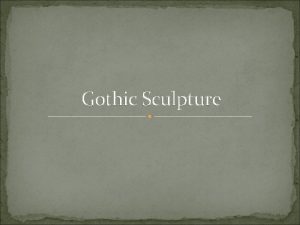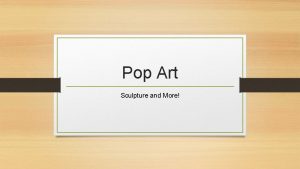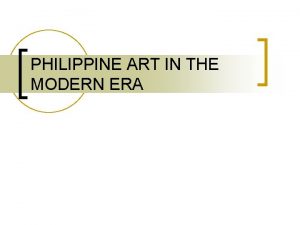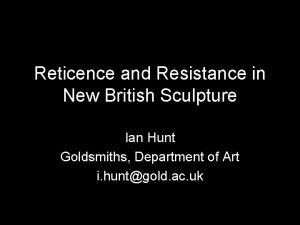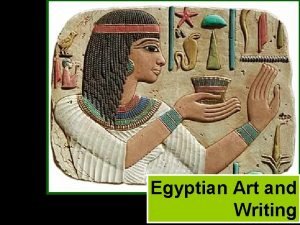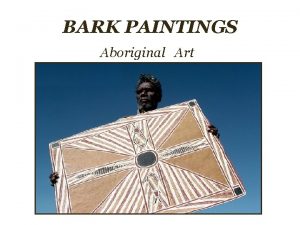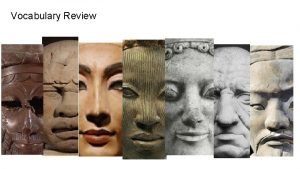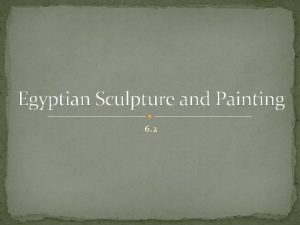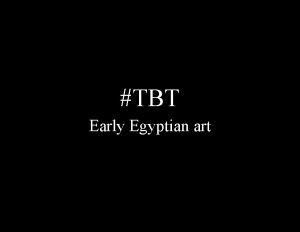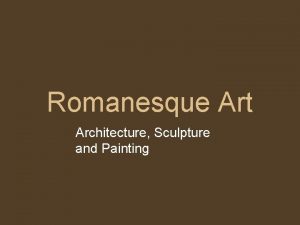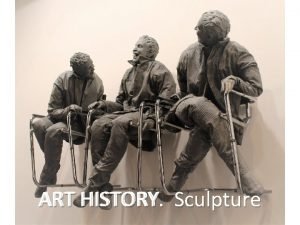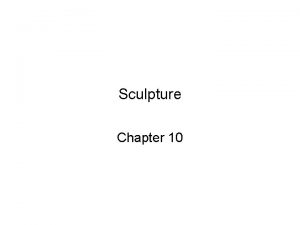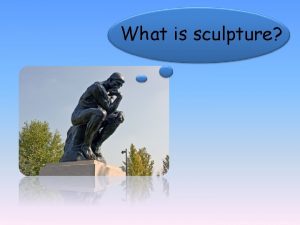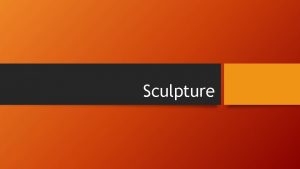Egyptian Art History Painting Sculpture Architecture Map of











- Slides: 11

Egyptian Art History Painting, Sculpture & Architecture

Map of Ancient Egyptian art remained unchanged for approximately 3000 years (3000 - 300 BC)

QUESTION #1 What was the main purpose for the creation of the colossal architecture and art of Egypt? ANSWER The main purpose was to surround the pharaoh’s spirit (Ka) with eternal glory.

Eternal Glory Pyramids= Pharaoh’s Tomb- A burial place and zone of passage into the afterlife. -Filled with food and objects the deceased would want and need in the afterlife (including dishes, makeup, jewelry, furniture etc) -Wall paintings & hieroglyphics (ancient writing system) show replay of life accomplishments. Also activities that the deceased were involved in when they were alive and wished to carry on doing for eternity.

Art & the Afterlife -To ensure passage into the afterlife, the deceased had to be physically preserved (mummification). -A Funeral Mask covered the face -Organs were kept in canopic jars -Body placed inside several coffins which were place inside stone sarcophagus.

QUESTION #2 What was the purpose of a portrait statue and why are they important? ANSWER Portrait Statues provided an alternative dwelling place for the ka (spirit), incase the mummified body of the Pharaoh deteriorated and could not longer house it.

QUESTION #3 What is the formal Egyptian formula for representing a person in Egyptian Art? ANSWER In stone carvings and drawings, the human form is depicted with a front view of the eye and shoulders, and a profile view of head, arms and legs. The broad shouldered, narrowhipped figure wears a headdress and kilt.

Painting & RElief carving Paintings & carvings were arranged in parallel lines called Registers (separated the scenes & provided ground for scene)

QUESTION #4 What is the significance of how large or small a person is depicted in work of art? ANSWER The size of the figure indicated rank. Pharaohs were presented as giants towering over small servants.

QUESTION #5 After examining how the Great Pyramid is designed, how did workers escape after they sealed off the pyramid to deter tomb raiders? ANSWER Workmen escaped down a shaft, and up the Descending Corridor

KEY WORDS Ka Hieroglyphics Mummification Canopic Jars Sarcophagus Registers
